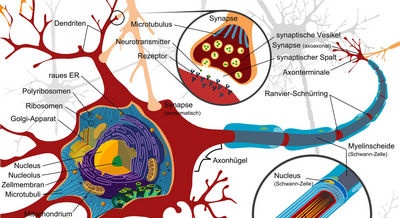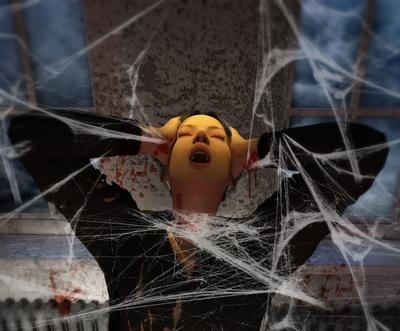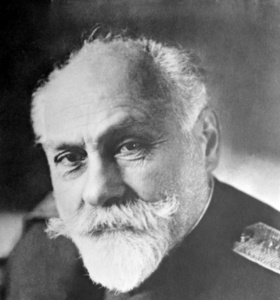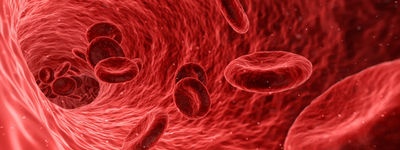|
 There are three main parts in the human nervous system: central, peripheral and vegetative. There are three main parts in the human nervous system: central, peripheral and vegetative.
The central nervous system includes the brain and spinal cord.
Spinal cord is the most ancient part of the central nervous system. It has two active functions. First, it is a conductor of nerve impulses from various organs of the body to the brain and from the brain to muscles. Secondly, it is the focus of a number of reflex centers that perform automatic reactions that occur without the participation of parts of the brain. These include, for example, various defensive movements, vascular reactions, urination, etc.
It is interesting to note that the ratio of brain to spinal cord weight changes dramatically in favor of the brain as the development of the brain becomes more difficult. The brain reaches its greatest development in humans - the most highly organized creature. So, if in birds the weight of the brain exceeds the weight of the spinal cord by two times, in a cat by three times, in a dog by five times, and in a monkey by eleven, then in a person the weight of the brain exceeds the weight of the spinal cord by forty-nine times!
Weight brain modern man is on average 1400 grams. In some animals, the absolute expression of the weight of the brain is greater than that of humans (dolphins - 2000, elephants - 4000, whales - 7000 grams). However, the relative brain weight (the ratio of brain weight to body weight) in humans is greater than in these animals.
The capacity of the skull (for the volume of the brain) of modern man is much greater than the capacity of the skull of higher animals - monkeys. In humans, it averages (for a European) 1450; a monkey (gorilla) has from 400 to 600 cubic centimeters.
The historical ancestors of modern man had the following average volume of the cerebral cavity: Pithecanthropus - 850, Sinanthropus - 1050, Neanderthal - 1400 cubic centimeters.
 Peripheral nervous system consists of nerves extending from the central nervous system; this includes 12 pairs of cranial nerves and 31 pairs of spinal nerves. Through the peripheral nervous system, the central nervous system is connected with the external nerve endings of the sensory organs (receptors) and with the organs that carry out the body's responses - with muscles, glands, etc. Peripheral nervous system consists of nerves extending from the central nervous system; this includes 12 pairs of cranial nerves and 31 pairs of spinal nerves. Through the peripheral nervous system, the central nervous system is connected with the external nerve endings of the sensory organs (receptors) and with the organs that carry out the body's responses - with muscles, glands, etc.
Autonomic nervous system regulates, ensuring rhythm, the work of internal organs - heart, blood vessels, lungs, stomach, intestines, endocrine glands, etc. The vegetative part of the nervous system is divided into sympathetic and parasympathetic; each internal organ is simultaneously innervated by fibers of one and the other. The sympathetic system usually enhances the activity of the organ, and the parasympathetic system inhibits.
All the complex work of the nervous system occurs in two main directions: on the one hand, in the direction of combining the work of all parts of the body, on the other, in the connection of the organism with the environment, in the adaptation of the organism to external conditions, and if we have in mind a person, in the purposeful change of environment.
Pavlov called the first half of nervous activity lower nervous activity, and the second, due to its complexity and subtlety, - higher nervous activity... Higher nervous activity, which determines the behavior of animals and humans, is a function of the cerebral hemispheres, by studying the work of which one can learn the laws of the physiological foundations of the psyche. The cerebral hemispheres have extremely complex structure and functional features.This was the reason that a truly scientific study of the work of the brain until recently was beyond the power of mankind.
In general, the human brain, like that of vertebrates, consists of five sections: the anterior, intermediate, middle, cerebellum and oblong. Each of these departments has a specific function. Not being able to fully characterize the functions of each of the departments, we will note some of them. So, medulla associated with the processes of respiration, digestion and blood circulation. Cerebellum has to do with consistency of movement and muscle tone. Midbrain takes part in the regulation of movements associated with external influences on the sense organs in the so-called rectifying movements. Diencephalon performs the functions of both a regulator of a number of complex movements and an apparatus that perceives gustatory, olfactory, visual, auditory, tactile and painful stimuli. The terminal part of the forebrain consists of the cerebral cortex and a number of subcortical nodes.
The importance of the cerebral cortex
The cerebral cortex is the outer layer of the cerebral hemispheres of vertebrates and humans, formed by the bodies and processes of nerve cells. It represents the highest and at the same time the youngest part of the brain, which has reached the highest development in humans. The development of the cortex proceeded under the influence of ever more complicated relations with the external environment. For the development of the human cerebral cortex, the emergence of social labor activity of people was of decisive importance. The higher centers of all organs are concentrated in the cerebral cortex; in it, both regions and 52 fields are distinguished, having a specific structure associated with the implementation of the corresponding functions. However, there is no sharp boundary between fields.
The total surface of the human cerebral cortex is 2200 square centimeters; in higher animals the number of cells in the cortex is many times greater than the number of cells in all other parts of the nervous system taken together; in humans, the cortex contains about 14 billion cells, forming six layers of the cortex with a total thickness of 3-4 millimeters.
 The outer part of the bark is pitted with furrows, which contain most of the entire bark. The presence of grooves allows the bark to occupy a large surface. Between the furrows there are elongated eminences of various shapes, called cerebral convolutions. The system of radial and horizontal nerve fibers found in the cortex connects different parts of the cortex into a single whole. The outer part of the bark is pitted with furrows, which contain most of the entire bark. The presence of grooves allows the bark to occupy a large surface. Between the furrows there are elongated eminences of various shapes, called cerebral convolutions. The system of radial and horizontal nerve fibers found in the cortex connects different parts of the cortex into a single whole.
The leading integrating and regulating role of the cerebral cortex in all types of body activity is provided by its numerous nervous connections both with the underlying parts of the nervous system and with all parts and organs of the body. Signals from the sense organs, muscles, joints, internal organs and various functional systems come to the cortex along the centripetal (afferent) nerves. Through centrifugal (efferent) fibers, impulses go to executive organs, such as muscles.
Normal human mental activity is impossible without the cerebral cortex. A child was observed who was devoid of bark and lived for about four years. With eyes and hearing aids, this child was blind and deaf; he shouted a lot, moved his hands randomly and did not learn even the simplest skills.
Communication of the brain with other organs of the body
The brain is connected to other organs and depends on these organs to function properly. So, the dependence of the brain on the circulatory system is quite obvious. The brain is abundantly supplied with blood vessels, and damage to them leads to a malnutrition of brain cells. This can cause some deviations from the norm in the brain.
The so-called endocrine glands have an important effect on the activity of the nervous system, and therefore on the psyche.These glands produce and release into the blood special substances called hormones, that is, pathogens. These glands include the thyroid gland, the lower cerebral appendage, or pituitary gland, adrenal glands, pancreas, sex glands, and others. If these glands are sufficiently developed and work normally, this contributes to the normal course of life processes in the body and the normal manifestation of the psyche. Otherwise, deviations from the norm take place. So, with the underdevelopment of the thyroid gland in a growing organism, the metabolism is greatly reduced, growth stops, the figure becomes dwarf-shaped, puffy, speech slows down, a person becomes mentally retarded.
If the activity of the pituitary gland is disturbed, abnormal phenomena in the growth of the body are observed. The adrenal glands secrete the hormone adrenaline, which increases blood sugar, which has a beneficial effect on the muscles and central nervous system. The sex glands play a particularly important role in the body and behavior of animals and humans. A man, for example, devoid of sex glands, loses his male distinctive features: a beard and mustache do not grow, his voice becomes high. At the same time, sex drive is completely lost. Analysis of the functions of the endocrine glands provides one more confirmation of the inextricable connection between the psyche and the vital activity of the organism.
Considering the brain as the material basis of the psyche, it is impossible to avoid the problem of the distribution of functions in the brain.
Localization and Equipotentialism
There are two extremes in solving this problem. On the one hand, localizationism, on the other, equipotentialism. The first direction is trying to confine individual mental processes to limited areas of the brain. Second, he considers the brain to be an undifferentiated mass.
The most striking exponent localization should be considered an Australian doctor Gall (1758-1828). He believed that any mental feature (orientation in space, love for parents, visual and auditory memory, sense of time, vanity, caution, etc.) is a function of a certain group of cells in the cortex. The development of each of the features leads to an increase in the corresponding cerebral organ, which, in turn, causes a bulge in the skull. According to Gall, it turned out that by the bulges and depressions on the skull, one can judge the development or underdevelopment of certain human abilities. This is how the pseudoscience phrenology arose, the erroneous conclusions of which were widely used by various charlatans. The inconsistency of phrenology is already evident from the fact that the shape of the skull does not correspond to the shape of the brain.
Representative equipotentialism can be called a living American physiologist K. Lashley... Studying the behavior of rats after removing different areas of the cortex and establishing that the correct or incorrect action of the animal in the maze depends not on which area of the brain is removed, but on the size of the total mass of the removed cortex, Lashley came to the conclusion that all areas of the cortex are equal.
The inconsistency of equipotentialism is already evident from the fact that in the cerebral cortex of animals and humans, various sense organs are represented in completely definite places. Removal of these places, for example, visual, will lead to a sharp impairment of vision. And a person, say, in the posterior third of the inferior frontal gyrus of the left hemisphere has a motor speech center (center Broca), damage to which leads to impaired speech articulation. And in the posterior part of the first temporal gyrus of the left hemisphere is the auditory center of speech (center Wernicke), damage to which leads to impaired understanding of speech.
The first scientific picture of the connection between the brain and the organs gave I. P. Pavlov in his doctrine of dynamic localization of functions.According to Pavlov, the brain is not an undifferentiated mass, but a structure of nerve cells, correspondingly representing both external and internal receptors. Physiological and corresponding mental functions (sensation, thinking, etc.) are not properties of only anatomically defined areas of the brain, but the result of dynamic phenomena confined to these and other correlative areas. organs gave I. P. Pavlov in his doctrine of dynamic localization of functions.According to Pavlov, the brain is not an undifferentiated mass, but a structure of nerve cells, correspondingly representing both external and internal receptors. Physiological and corresponding mental functions (sensation, thinking, etc.) are not properties of only anatomically defined areas of the brain, but the result of dynamic phenomena confined to these and other correlative areas.
Modern science leaves no room for either the concept of narrow localizationism or the point of view of equipotentiality of the brain tissue. It turned out that even such functions as the knee reflex and breathing cannot be localized in limited areas of the brain. Breathing, for example, is regulated by the complex dynamic structure of nerve cells at different levels of the nervous system. Therefore, we can talk about the phased localization of functions.
At the same time, the same parts of the brain can be included in different functional systems and participate in the performance of various tasks. Clinical and pathological studies have established that the restoration of the impaired function consists not in moving it to the equipotential parts of the brain, but in its restructuring, in the formation of a new functional system. On the other hand, as noted A.R. Luria, a violation of any function can occur when differently located areas of the cerebral cortex are affected, and a limited lesion causes a disorder of a whole complex of heterogeneous functions.
The same applies to functions such as thinking and speech. According to modern scientific concepts, the material basis of the higher mental processes of a person is the entire brain as a whole as a highly differentiated system, the parts of which provide various aspects of a single whole. Summarizing numerous studies by different authors and his own, A.R. Luria writes that higher mental functions can exist only through the interaction of highly differentiated brain structures, each of which makes its own specific contribution to the dynamic whole and participates in the functional system in its own roles. These functional systems do not appear ready-made for the birth of a child and do not mature on their own, but are formed in the process of communication and objective activity of the child.
In light of the Pavlovian concept of dynamic localization of functions, it is no longer possible to simply compare mental states with limited areas of the cerebral cortex.
V. Kovalgin - Revealing the secrets of the psyche
|
 There are three main parts in the human nervous system: central, peripheral and vegetative.
There are three main parts in the human nervous system: central, peripheral and vegetative. Peripheral nervous system consists of nerves extending from the central nervous system; this includes 12 pairs of cranial nerves and 31 pairs of spinal nerves. Through the peripheral nervous system, the central nervous system is connected with the external nerve endings of the sensory organs (receptors) and with the organs that carry out the body's responses - with muscles, glands, etc.
Peripheral nervous system consists of nerves extending from the central nervous system; this includes 12 pairs of cranial nerves and 31 pairs of spinal nerves. Through the peripheral nervous system, the central nervous system is connected with the external nerve endings of the sensory organs (receptors) and with the organs that carry out the body's responses - with muscles, glands, etc. The outer part of the bark is pitted with furrows, which contain most of the entire bark. The presence of grooves allows the bark to occupy a large surface. Between the furrows there are elongated eminences of various shapes, called cerebral convolutions. The system of radial and horizontal nerve fibers found in the cortex connects different parts of the cortex into a single whole.
The outer part of the bark is pitted with furrows, which contain most of the entire bark. The presence of grooves allows the bark to occupy a large surface. Between the furrows there are elongated eminences of various shapes, called cerebral convolutions. The system of radial and horizontal nerve fibers found in the cortex connects different parts of the cortex into a single whole. organs gave I. P. Pavlov in his doctrine of dynamic localization of functions.According to Pavlov, the brain is not an undifferentiated mass, but a structure of nerve cells, correspondingly representing both external and internal receptors. Physiological and corresponding mental functions (sensation, thinking, etc.) are not properties of only anatomically defined areas of the brain, but the result of dynamic phenomena confined to these and other correlative areas.
organs gave I. P. Pavlov in his doctrine of dynamic localization of functions.According to Pavlov, the brain is not an undifferentiated mass, but a structure of nerve cells, correspondingly representing both external and internal receptors. Physiological and corresponding mental functions (sensation, thinking, etc.) are not properties of only anatomically defined areas of the brain, but the result of dynamic phenomena confined to these and other correlative areas.









